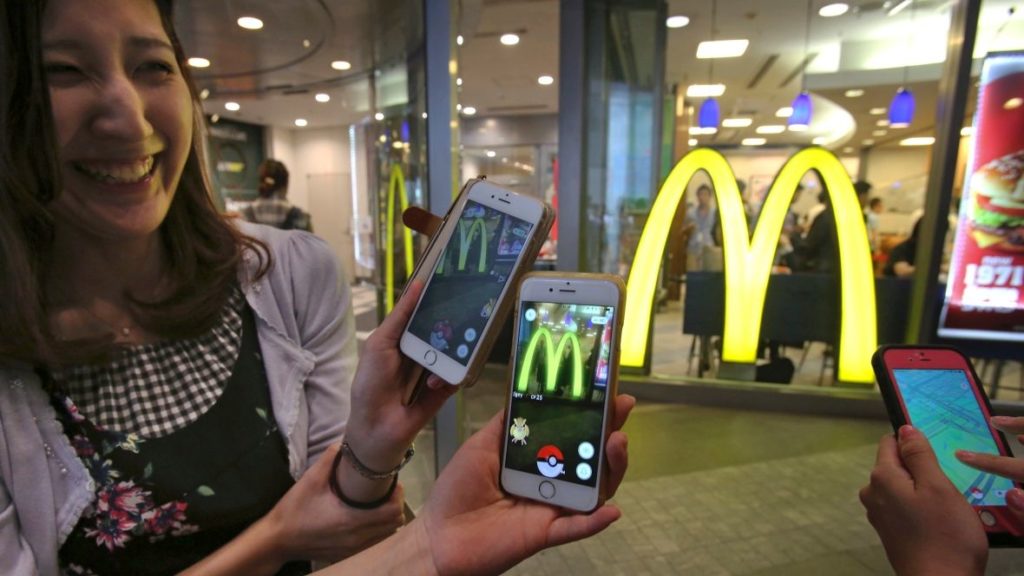With the impressive success of Pokémon GO, interest in creating location-based games has naturally spiked. If there’s a mobile game publisher around who hasn’t at least considered the idea that a location-based game, it would be surprising. While most of the attention has focused on the amazing metrics of Pokémon GO, one of its key advances lies in monetization. Pokémon GO is demonstrating the viability of sponsorship, and it’s not just applicable to location-based gaming. The potential of sponsorship is enormous, and it’s going to be up to marketers to realize that potential.
Let’s start by looking at what Pokémon GO is doing in just over a month. The game has already passed 100 million downloads on the Google Play store, in addition to setting a record on the Apple App Store for the most downloads ever in a launch week. Estimates are that the game is generating around $10 million per day in revenues; another source estimates that the game has generated $268 million in less than five weeks after launch. An astounding 29 percent of US players have spent money in the app, according to YouGov, and so have 20 percent of German players. Some 9 percent of German players (142,000 people) have spent more than €100. These metrics are astounding, and it’s no wonder that other publishers are looking to figure out how they can create something nearly as popular.
Part of what’s driven the success of Pokémon GO is its effect on businesses in the real world. The game has driven swarms of players out into the real world. Businesses lucky enough to be near PokéStops or PokéGyms have seen a huge increase in traffic and revenues. For example, one ice cream store saw its business triple thanks to Pokémon GO; plenty of other businesses are seeing sales boost as well. Some of these businesses are paying to put lures in nearby places, which is adding to the revenue generate by Pokémon GO. However, since that’s done through individual accounts, it’s not tracked as revenue from businesses.
It’s not clear whether Niantic will be taking advantage of this phenomenon to work directly with small businesses, but the company did study a similar effect with its earlier game, Ingress.
“Gamers will memorize the locations of these local businesses, they’ll visit them more frequently, and they’ll make purchases when they’re there,” said Niantic CEO John Hanke, speaking at GamesBeat earlier this month. “Then you see that ad hoc validation from all the small businesses that have adapted that strategy themselves, just buying lures through in-app purchases and applying them to PokéStops nearby. Some of them have published ROI metrics around that. There are how-to guides for businesses about how to use Pokémon. That’s really cool. The power, if you will, is in the hands of the users and businesses that are savvy and want to take advantage of that.”
Niantic has moved to take advantage of corporate sponsorship for mobile game monetization. The first sponsorship announcement was a deal with McDonald’s of Japan, turning the chain’s outlets into PokéStops and PokéGyms to lure players. It’s been a rousing success so far for McDonald’s, which credited the deal for helping the company post its first profitable quarter after seven consecutive losing quarters. While it’s too early to estimate the precise impact on earnings, McDonald’s did note the company is seeing an increase in traffic due to the sponsorship.
What’s fascinating about this partnership is the way it’s affecting the game. Hanke sees corporate sponsorships as a way to reduce reliance on in-app purchases to generate revenue. “It’s tough to understand where you want to draw the line,” Hanke said. By adding sponsorships, the company felt “we wouldn’t have to cave to that pressure to just dial it up a little more.”
Niantic has big plans to do more with sponsorships. “It’s in its early days,” Hanke told GamesBeat. “We have run that through Ingress. We have a number of global sponsors in that game. We launched Pokémon GO with McDonald’s in Japan. We’re talking to a bunch of other businesses that want to take advantage of that model for Pokémon GO in other parts of the world. It’s promising. Again, it’s early days. People have been talking about ads in video games for a long time. But this is a case where, because you’re able to draw people to physical locations, you can do something that not too many other forms of advertising can do. We’re excited about it.”
Right now, monetization for mobile games is generally either from advertising or through in-app purchases. Adding another major form of monetization could have a huge impact on how mobile games are structured or paid for, and how players perceive them.
Sponsorships need not be exclusive to location-based games. If you have a game set in the modern world, brands could have a presence in the game in much the same way as product placement in a movie. Heroes could be drinking specific beverages or staying in a certain brand of hotel. As in movies, such placement would be subject to careful scrutiny to make sure a brand is seen appropriately.
So how do you go about lining up a sponsorship? That’s going to fall to marketers, who are the people that speak the language of brands. Marketers, start thinking about sponsorship possibilities for your games, whether or not they are mobile or location-based at all. Game audiences have reached a size where they should be on major brands’ radar, and sponsorship could be a winning formula for developers, publishers, and players alike.

